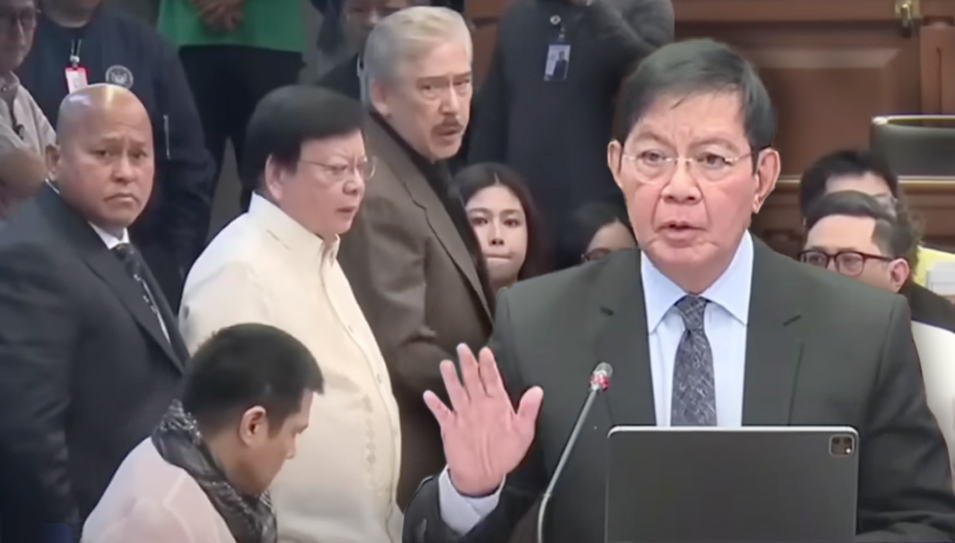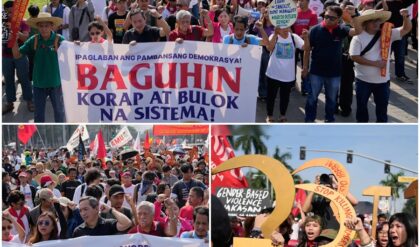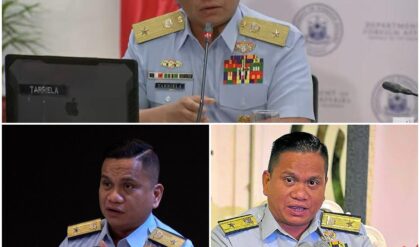It began like any other Senate session—heated debates, murmurs in the gallery—but that morning turned into chaos the moment Senator Discaya raised a small black USB drive before the cameras. His hands were shaking. “The names are inside this,” he said. “If I don’t release it, I’ll be next.”
The chamber fell into dead silence. A few senators exchanged glances, visibly tense. Others grabbed their phones as if to make urgent calls. According to insiders, the USB contained more than six hundred gigabytes of data—emails, bank transaction logs, and hours of audio recordings allegedly exposing secret deals involving “project funds” and “allocation adjustments.”
In one of the recordings, a voice that sounded unmistakably like a well-known senator could be heard saying, “Just mark it approved. We’ll split the kickback like before.” The clip reportedly played during a closed-door hearing, leaving staff in tears and several members walking out in shock. One insider said, “You’d never imagine hearing those words from the same people you see on TV every day.”

Hours later, photos surfaced online showing three senators entering a luxury hotel in Pasay around 10 p.m. They were seen meeting with two businessmen in a private room. When they left, they slipped through a back exit—no security, no media. One senator dismissed the photos as “edited,” but by the next morning, he was nowhere to be found at the Senate. That same day, an urgent memo circulated: “Emergency security audit – all Senate servers.” No explanation. No signature.
The next shock came when a group calling itself “Tagapagsiwalat 12” (“The Revealers 12”) claimed responsibility for leaking the “Discaya Files.” In an audio message, an emotional voice—allegedly that of a former consultant from the Commission on Infrastructure Funding—confessed, “It started with a small project, but it grew. Those who refused were fired… or threatened.”
By dawn, the hashtag #DiscayaFiles was trending nationwide. Protesters filled the streets of Quezon City carrying signs reading “WHO IS THE QUEEN?” while journalists received anonymous calls warning, “Stop what you’re doing. You don’t know who you’re dealing with.”
Three days later, Senator Discaya vanished. He was missing from his office and home, and flight records showed a private jet under “D. Enterprises” had flown to Hong Kong that night. Some believed he fled. Others whispered he had been “taken”—silenced before the full truth could come out. Within the Senate, fear hung heavy. Staff began resigning quietly. “It feels like there’s a shadow watching everyone,” one aide said. “No one talks, but everyone knows something huge is happening.”

A week later, the Palace issued a statement claiming all documents were fake. But instead of calming the public, it only fueled suspicion. Online forums exploded with screenshots of supposed email chains between figures using codenames—“Vox,” “Falcon,” “Dama,” and “Queen.” One message read: “Deliveries will be made in three batches. Make sure ‘the lawyer’ gets the final share. Use the church drop-off like last time.” No names were mentioned, but those familiar with the Senate said everyone knew who “the lawyer” was.
Two weeks after Discaya’s disappearance, a video suddenly appeared online. A man, his back turned to the camera, spoke in a trembling voice eerily similar to the senator’s:
“If you’re hearing this, I’m no longer safe. Inside this file is the truth. The names on the list—they’re the reason our country is suffering.”
The video gained ten million views within hours before being deleted from every platform. But by then, it was too late—thousands had already downloaded and mirrored it across encrypted chat groups and news circles. Many now call it “Discaya’s final message,” recorded before he was permanently silenced.
Then came another twist. A plain brown envelope was discovered at the doorstep of a national newspaper. Inside was a document titled:
“CONFIDENTIAL: SENATE FUND RE-ALLOCATION PLAN – Approved by D.”
At the bottom was a signature that experts confirmed matched that of a sitting senator. Attached was a list of government projects totaling ₱1.2 billion. No one wanted to claim responsibility for the leak. “You can’t throw this away,” said one newspaper staffer. “It’s proof. It’s real.”
Now, as investigators dig deeper, the line between truth and manipulation blurs further. Who is “Queen”? Who is “the lawyer”? Is there really an audio recording from inside the Senate itself? And most haunting of all—is Senator Discaya still alive?
Each night, new images appear online—grainy photos of a man resembling Discaya, sitting inside a van, head bowed, flanked by armed men. No official confirmation. No statements. Just silence.
But one message sent to a journalist from an unknown number chills everyone who reads it:
“This isn’t the end. The game is just beginning.”
And as the entire nation waits for the next revelation, one thing is clear: the truth behind the Discaya Files might be too explosive for even the Senate to survive.





